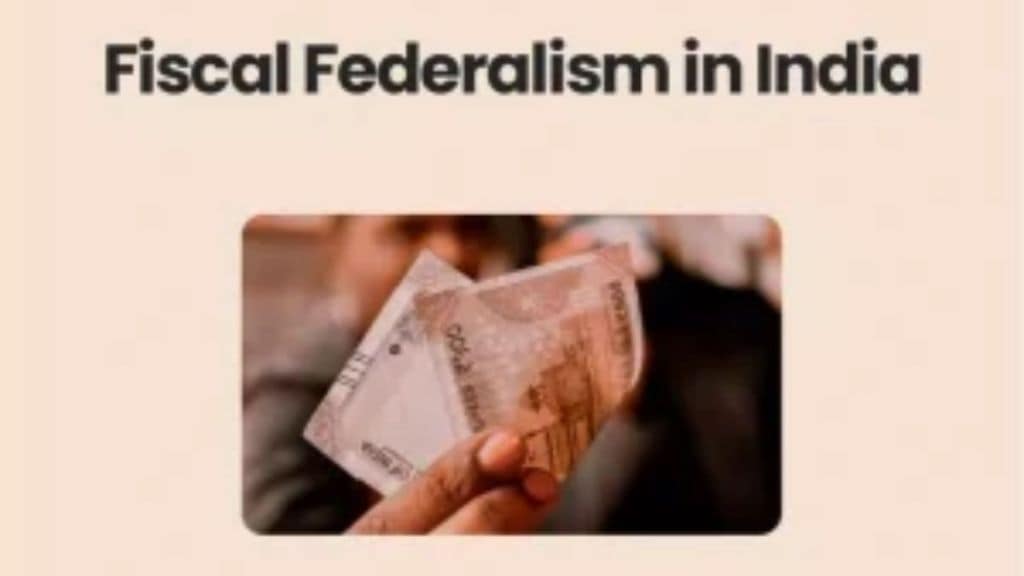The 16th Finance Commission (FC) begins its work at a defining moment for India’s federal compact. The economy now stands at roughly $4 trillion, with states accounting for over 55% of total public expenditure, up sharply from less than half a decade ago. India’s fiscal structure has shifted-the Union remains the architect of macro strategy, but states are now the primary executors of growth.
The FC’s role extends far beyond fiscal arithmetic. It must strike a constitutional balance between equity and efficiency, growth and justice, redistribution, and performance. With India targeting a $10-trillion GDP within the decade, the principles of devolution must evolve to serve the India of today.
The 15th FC’s tenure coincided with a period of intense flux-pandemic shocks, global inflation, and strong tax buoyancy. Between FY21 and FY26(E), gross tax collections reached 193.8 lakh crore, exceeding projections by 26%, while devolutions to states rose to62.8 lakh crore, around 24% higher than anticipated. This surge reflected a resilient recovery and broader tax base. Yet, even as revenues have strengthened, the Union’s share of public spending has fallen to about 45%, with states leading the charge on infrastructure, health, and welfare.
However, this redistribution of fiscal power has not been matched by a structural rethinking of how resources are shared. The 16th FC faces a dual challenge-to ensure fiscal federalism remains equitable and sustainable, and to design a formula that empowers states to drive competitiveness in a globalised economy.
The tensions in India’s intergovernmental fiscal relations are well known but increasingly acute. Several high-performing states-Maharashtra, Karnataka, Gujarat, and Tamil Nadu-argue that their economic weight and tax contributions are under-recognised in the horizontal devolution formula. As such, they face declining per capita transfers despite contributing disproportionately to GDP and exports. Southern states have long opposed the continued use of outdated population data (1971 and 2011), which effectively penalises their success in population control and governance.
The formula also fails to reward fiscal discipline, administrative efficiency, or service innovation, while the growing use of cesses and surcharges-averaging 15% of gross tax revenue-has eroded the divisible pool, constraining states’ fiscal space even as their responsibilities grow.
These factors have deepened perceptions of a north-south divide in India’s fiscal architecture. Yet the true task for the 16th FC is not to reconcile grievances but to modernise India’s fiscal design to reflect an economy that is more complex, digital, and globally integrated. It must interrogate data, not perceptions-for instance, although southern states’ devolution has declined, populous northern states like Uttar Pradesh and Bihar have also seen reductions, while smaller northeastern states (except Assam) have gained disproportionately.
India needs a forward-looking fiscal design. The framework proposed in our report (www.3one4capital.com/reports) recommends retaining the 41% vertical devolution to maintain stability but refining the horizontal allocation to include new variables such as sustainable development goals-linked development outcomes, fiscal effort, and ecological resilience-aligning state incentives with national goals of sustainability, competitiveness, and inclusion.
This would help rationalise outcomes: in the proposed model, most states cluster within a per capita range of Rs 8,000-13,000, avoiding the extreme outliers that characterised the 15th FC. High-population, high-contribution states such as Gujarat, Karnataka, and Maharashtra would receive allocations more consistent with their economic weight, while smaller states like Mizoram and Arunachal Pradesh would see rationalised reductions.
A key innovation lies in restructuring grants. The new model proposes compensatory grants to offset transitional shortfalls so that no state receives less than it did in the final year of the 15th FC; local government grants to strengthen rural development and urban governance; and untied grants that allow states fiscal autonomy to address local priorities without central prescriptions. This recognises that urban India-expected to reach 38% of the population by 2031-is a core driver of growth and must be financed accordingly.
The underlying shift is conceptual: devolution must move from compensatory to enabling, from reactive to forward-looking. States should not merely receive transfers; they must be equipped to generate growth and resilience independently. India’s fiscal federalism must evolve from being a system of correction to one of co-creation, where the Centre and states act as joint architects of growth.
Three reforms are central to this transformation. First, the divisible pool must be protected. The unchecked rise of cesses and surcharges undermines cooperative federalism; introducing transparency and capping them at 10% of gross tax revenue would restore balance. Second, the devolution formula must become performance-sensitive. States that improve fiscal health, strengthen public services, or expand their digital public infrastructure should be rewarded.
Third, the formula must internalise climate and demographic asymmetries. Ageing southern states face rising health and pension costs, while younger northern states will require more investment in education and jobs. Recognising these divergent pressures is essential to preserving fairness and sustainability.
The 16th FC must also navigate risks. Continued reliance on non-shareable revenues could widen fiscal imbalances; population-based criteria may trigger political friction ahead of delimitation; and underfunded local bodies could weaken last-mile service delivery, eroding the development dividend of devolution. Managing these tensions will demand both technical precision and political acumen.
Ultimately, the 16th Finance Commission must transcend its traditional five-year remit. It must lay the foundation for a new federal contract that can support India’s transition to a $10-trillion economy. The challenge is formidable: to sustain equity while rewarding efficiency, to preserve solidarity while promoting success, and to ensure fiscal federalism becomes an engine of growth rather than a point of friction.
If the 14th and 15th Commissions consolidated fiscal transparency and autonomy, the 16th must craft a growth-oriented fiscal design that transforms cooperative federalism into a strategic enabler of national competitiveness.
TV Mohandas Pai & co-author Nisha Holla occupy the positions of chairman and research fellow respectively at 3one4 Capital.
Disclaimer: Views expressed are personal and do not reflect the official position or policy of FinancialExpress.com. Reproducing this content without permission is prohibited.

